مقدمة
مقدمة في مسبار التآكل المقاوم للكهرباء
التآكل هو تقدم طبيعي. عادة ما يتفاعل المعدن مع البيئة. هذا يسبب التآكل. في البيئة الصناعية ، قد يتسبب ذلك في تعطل المعدات ، ومخاطر السلامة المحتملة ، وانقطاع نظام الأنابيب. لحل هذه المشاكل ، يعد مسبار التآكل بالمقاومة الكهربائية أداة مهمة لمراقبة التآكل.
يقيس مسبار التآكل بالمقاومة الكهربائية معدل التآكل عن طريق الكشف عن مقاومة العناصر المعدنية ، والتي تتغير وفقا للتآكل. مع حدوث التآكل ، تقل جودة المسبار ، مما يؤدي إلى زيادة المقاومة. التغييرات في المقاومة تتناسب مع كمية التآكل التي تحدث.
تعتبر بيانات التآكل الخاصة بمسبار التآكل المقاوم للكهرباء مهمة جدا للعديد من الصناعات. ويشمل صناعة النفط والغاز ومعالجة المياه والبنية التحتية والعديد من المناطق الأخرى.
لمحة موجزة عن التآكل وتأثيره على الصناعات
يشير التآكل إلى التقدم الذي يكون للمواد (خاصة المعادن) تفاعلات كيميائية مع البيئات المحيطة. لا يظهر هذا الانحطاط على أنه تآكل في الهواء الرطب فحسب ، بل يشمل أيضا أ مجموعة متنوعة من العمليات الكيميائية والكهروكيميائية الأخرى. التآكل له تأثير عميق على البيئة. تتأثر صناعة النفط والغاز والتصنيع وصناعات البناء بشكل خاص بالتآكل.
أهمية مراقبة التآكل
تعد مراقبة التآكل أمرا بالغ الأهمية للحفاظ على سلامة عمر خدمة الصناعة. ب تتبع تطور التآكل بشكل منهجي ، يمكن للشركات اتخاذ الاحتياطات قبل الانهيار. يمكن أن تؤدي مراقبة التآكل إلى إطالة عمر خدمة المعدات وضمان سلامة أمن الأفراد.
دور مسبار التآكل بالمقاومة الكهربائية
تعريف ووظيفة مسبار التآكل المقاوم للكهرباء
المقاومة الكهربائية هي المعدات المستخدمة لمراقبة معدل التآكل في البيئة الصناعية. يعتمد على عامل واحد: عندما يتآكل المعدن ، تقل مساحة المقطع العرضي ، مما يزيد من المقاومة. يقيس مسبار ER هذا التغيير في المقاومة بمرور الوقت ، والذي يمكن أن يكون مرتبطا بكمية المعدن المفقودة بسبب التآكل.
تتمثل وظيفة مسبار ER في توفير بيانات في الوقت الفعلي حول معدل تآكل المعادن في بيئات مختلفة ، مثل الأنابيب والخزانات وأوعية المعالجة. هذه المعلومات مهمة لبرنامج الصيانة.
مكونات مسبار التآكل بالمقاومة الكهربائية
تتكون مجسات التآكل ER عادة من الأجزاء التالية:
محول التحقيق
يعد محول المسبار مكونا مهما يتصل بعنصر مستشعر مسبار التقارير الإلكترونية ونظام المراقبة. إنه يعمل كواجهة بين المسبار وجهاز الحصول على البيانات ، مما يضمن نقل قراءة مقاومة المسبار بدقة إلى مسجل البيانات أو جهاز الإرسال. عادة ما يتم تصميم المحولات لتكون متوافقة مع أنواع معينة من مجسات ER وبيئات التشغيل الخاصة بها لضمان أداء موثوق به وتقليل التداخل مع قياسات المقاومة.
مسجل البيانات المحمول
مسجل البيانات المحمول هو جهاز محمول مضغوط لجمع البيانات وتخزينها من مجسات التقارير الإلكترونية بمرور الوقت. إنه مصمم لسهولة التشغيل في الميدان ويمكن نقله بسهولة إلى مواقع مراقبة مختلفة. يسجل مسجل البيانات المحمول قيمة المقاومة التي يكتشفها المسبار ، مما يسمح بتحليل معدل التآكل المستند إلى الوقت. غالبا ما يمكن تنزيل البيانات المخزنة في هذه الأجهزة على جهاز كمبيوتر لمزيد من التحليل وإعداد التقارير ، مما يجعلها أداة قيمة لموظفي الصيانة ومهندسي التآكل.
جهاز الإرسال اللاسلكي (جهاز الحصول على البيانات)
جهاز الإرسال اللاسلكي ، في سياق نظام مسبار التقارير الإلكترونية ، هو جهاز للحصول على البيانات. يرسل لاسلكيا بيانات المقاومة التي تم جمعها إلى محطة أو نظام مراقبة عن بعد. هذا يسمح بمراقبة التآكل في الوقت الفعلي دون الحاجة إلى توصيلات الكابلات المادية. من المرونة والأكثر ملاءمة وضع المجسات في البيئات الصعبة أو الخطرة. يمكن غالبا تكوين أجهزة الإرسال اللاسلكية لإرسال تنبيهات أو إشعارات. هذا يضمن الوعي الفوري والاستجابة للمشاكل المحتملة عندما يتجاوز معدل التآكل عتبة محددة مسبقا.
فهم التآكل
ما هو التآكل ولماذا يهم؟
التآكل هو عملية طبيعية تنطوي على تدهور خصائص المعدن بسبب التفاعلات مع العناصر البيئية. هذه مشكلة شائعة يمكن أن تؤثر على مجموعة متنوعة من المعادن ، مما يؤدي إلى الضعف الهيكلي ، وفشل المكونات ، والظروف التي يحتمل أن تكون خطرة. التآكل مهم لأنه يمكن أن يكون له تأثير اقتصادي كبير بسبب التكاليف المرتبطة بالإصلاح والاستبدال والتوقف عن العمل. بالإضافة إلى ذلك ، فإنه يشكل مخاطر على السلامة وقد يؤدي إلى تلوث بيئي إذا لم تتم إدارته بشكل صحيح.
العلم وراء تآكل المعادن
العلم وراء تآكل المعادن هو في المقام الأول الكهروكيميائية. عندما يتفاعل المعدن مع بيئته ، يحدث التآكل ، مما يؤدي إلى تكوين أكاسيد أو مركبات أخرى. الشكل الأكثر شيوعا للتآكل هو أكسدة الحديد عند تعرضه للأكسجين والماء ، مما يشكل الصدأ (أكسيد الحديد). تتضمن هذه العملية نقل الإلكترونات من المعدن إلى الأكسجين ، وهو تفاعل قد يتسارع بسبب وجود أملاح أو أحماض أو بكتيريا معينة.
الأنواع الشائعة للتآكل التي تؤثر على الصناعات
يمكن أن تؤثر عدة أنواع من التآكل على الصناعة ، وفهمها أمر بالغ الأهمية للوقاية والمكافحة:
تآكل موحد: يحدث هذا التآكل بشكل موحد على السطح وهو أكثر أشكال التآكل التي يمكن التنبؤ بها ويمكن التحكم فيها.
التآكل الجلفاني: يحدث عندما يتلامس معدنان مختلفان ويتعرضا للإلكتروليت ، مما يتسبب في تآكل معدن واحد بشكل تفضيلي.
تنقر: تتميز بمناطق صغيرة موضعية من الصدأ ، مما يؤدي غالبا إلى تكوين حفر يصعب اكتشافها ويمكن أن تؤدي إلى خسارة كبيرة في المواد.
تآكل الشق: يحدث في مكان ضيق حيث يكون التلامس مع سائل العمل محدودا ، ويتسارع التآكل في هذه البيئة.
التآكل بين الخلايا الحبيبية: هجمات على حدود حبيبات المعادن ، عادة نتيجة للمعالجة الحرارية أو عمليات اللحام.
تكسير التآكل الإجهادي (SCC): ناتج عن التأثير المشترك لإجهاد الشد والبيئة المسببة للتآكل ، مما يتسبب في تشقق المادة.
فوائد استخدام مسبار التآكل المقاوم للكهرباء
منع التوقف عن العمل غير المخطط له باستخدام مجسات التقارير الإلكترونية
تلعب مجسات التآكل ذات المقاومة الكهربائية دورا مهما في الكشف عن معدلات التآكل في الوقت الفعلي ، مما يسمح بتخطيط الصيانة الاستباقي. من خلال تحديد المشكلات المحتملة قبل توسيعها ، تساعد مجسات الطوارئ في تجنب عمليات الإغلاق غير المخطط لها للمعدات أو البنية التحتية الحيوية ، والتي يمكن أن تكون مكلفة ومعطلة للعمليات.
تعزيز السلامة من خلال الكشف عن التآكل في الوقت المناسب
في أي صناعة ، تعتبر السلامة أمرا بالغ الأهمية ، وتلعب مجسات الطوارئ دورا رئيسيا في ضمان السلامة. من خلال توفير إنذار مبكر لزيادة نشاط التآكل ، تسمح هذه المجسات باتخاذ إجراءات تصحيحية قبل المساس بسلامة المكونات المعدنية. يعد هذا الكشف في الوقت المناسب ضروريا لتجنب الأعطال التي قد تؤدي إلى حوادث أو مخاطر بيئية.
إطالة عمر الأصول وتقليل تكاليف الصيانة
يمكن أن يؤدي الاستخدام المنتظم لمجسات ER إلى إطالة عمر الأصول بشكل كبير من خلال تحسين جداول الصيانة بناء على بيانات التآكل الفعلية بدلا من التقديرات. يسمح هذا النهج القائم على البيانات بالصيانة المستهدفة ، وتقليل النفقات العامة غير الضرورية وضمان إجراء الإصلاحات عند الحاجة فقط. ونتيجة لذلك، يتم تخفيض تكاليف الصيانة الإجمالية وتحسين العمر الإنتاجي للأصول.
معلمات مسبار التآكل بالمقاومة الكهربائية
المدى: 0 ~ 261144 وحدات حياة المسبار
نطاق مقاومة العنصر الحساس للمسبار: 1 ~ 50mΩ
الدقة: القيمة النموذجية 1 نانومتر ؛ (السماكة الإجمالية للعنصر الحساس للمسبار النموذجي هي 20 مل ، ويبلغ عمرها الافتراضي 10 مل.)
مزود الطاقة: مصدر طاقة 24VDC / بطارية ليثيوم
الاستهلاك الحالي: 12mA@24VDC / 1 ~ 12mA@8.4 فولت
الاتصالات: RS485 ثنائي الأسلاك ، معدل باود 2400 / 2.4 جيجا ، LORA ، 4G / 5G أو 4-20mA
عنوان RS485: 0 ~ 31
درجة الحرارة البيئية: -40 درجة مئوية ~ + 70 درجة مئوية
مستوى حماية الضميمة: IP 65
الحد الأقصى لمعدل الاستلام: مرة واحدة في الدقيقة
الحد الأدنى لمعدل التحصيل: مرة واحدة في أي فترة
شهادة المنطقة الخطرة: Ex d IICT4 Gb
طاولة التجميع
| يكتب | |||||||||||||||
| ECP | تجميع مسبار المقاومة | ||||||||||||||
| -شفرة | سدادة | ||||||||||||||
| بكسكسكس | يكتب | مادة | مادة مانعة للتسرب | ||||||||||||
| 0 | أي لا توجد متطلبات | 0 | أي الكربون الصلب | 0 | أي لا تكافيحات | ||||||||||
| 1 | أي إدراج جوفاء | 1 | أي 316 الفولاذ المقاوم للصدأ | 1 | أي حلقة ختم الفلور روبر / الختم الرئيسي PTFE | ||||||||||
| 2 | أي الفولاذ المقاوم للصدأ 316L | 2 | أي النتريل المهدرج | ||||||||||||
| 3 | أي F51 دوبلكس الفولاذ المقاوم للصدأ | ||||||||||||||
| 4 | أي سبيكة INCONEL القائمة على النيكل | ||||||||||||||
| -شفرة | مكونات قياس درجة الحرارة والضغط | ||||||||||||||
| Txxx | حجم الاتصال | مادة الجسم | مادة قياس درجة الحرارة والضغط | ||||||||||||
| 0 | أي لا تكافيحات | 0 | أي 304 الفولاذ المقاوم للصدأ | 0 | أي لا تكافيحات | ||||||||||
| 1 | أي 1/2 " | 1 | أي 316 الفولاذ المقاوم للصدأ | 1 | أي 304 الفولاذ المقاوم للصدأ | ||||||||||
| 2 | أي 3/4 " | 2 | أي الفولاذ المقاوم للصدأ 316L | 2 | أي 316 الفولاذ المقاوم للصدأ | ||||||||||
| 3 | أي F51 دوبلكس غير القابل للصدأ | ||||||||||||||
| -شفرة | تجميع التحقيق | ||||||||||||||
| دي إكس إكس -Lx" | حجم الاتصال | مادة الجسم | مواصفات خط الأنابيب ('') | ||||||||||||
| 0 | أي لا توجد متطلبات | 0 | أي الفولاذ المقاوم للصدأ | يختلف طول المسبار باختلاف مواصفات خط الأنابيب | |||||||||||
| 1 | أي 1/4 " | 1 | أي 304 الفولاذ المقاوم للصدأ | ||||||||||||
| 2 | أي 1/2 " | 2 | أي الفولاذ المقاوم للصدأ 304L | ||||||||||||
| 3 | أي 316 الفولاذ المقاوم للصدأ | ||||||||||||||
| 4 | أي الفولاذ المقاوم للصدأ 316L | ||||||||||||||
| 5 | أي F51Duplex غير القابل للصدأ | ||||||||||||||
| مثال: :ECP‐P121‐T021‐D02‐L6" ECP: أي تجميع مسبار المقاومة. P121: أي مادة إدراج مجوفة هي 316L ، مع حلقة مطاطية من الفلور وفولاذ رئيسي متعدد تترافلورو إيثيلين ؛ T201: أي حجم موصل مكون مقياس درجة الحرارة والضغط هو 3/4 "، والمادة 304 من الفولاذ المقاوم للصدأ. مقياس درجة الحرارة والضغط مصنوع من الفولاذ المقاوم للصدأ 304. D02: أي أن حجم اتصال المسبار غير مطلوب ، ومادة جسم المسبار من الفولاذ المقاوم للصدأ 316L ؛ L6 ": أي طول المسبار مناسب لخطوط الأنابيب 6 بوصات | |||||||||||||||
خاتمة
في الختام ، تلعب مجسات ER دورا لا غنى عنه في الصناعة الحديثة. لا توفر هذه الأدوات رؤى في الوقت الفعلي حول معدلات التآكل فحسب ، بل تمكن المؤسسات أيضا من إدارة سلامة أصولها بشكل أكثر فعالية. من خلال التدخل الاستباقي بناء على البيانات من هذه المجسات ، يمكن للشركات تجنب مخاطر التوقف غير المخطط لها وضمان التشغيل المستمر لمنشآتها.
علاوة على ذلك ، تعد مجسات ER حجر الزاوية في تعزيز السلامة في مكان العمل. إنها توفر ميزة واضحة من خلال اكتشاف التآكل مبكرا ، مما يسمح بالصيانة والإصلاحات في الوقت المناسب ، مما يخفف من مخاطر الأعطال الكارثية. لا يحمي هذا النهج الاستباقي لإدارة التآكل الأفراد فحسب ، بل يحمي البيئة أيضا من التلوث المحتمل.
بالنظر إلى المستقبل ، يبدو مستقبل مراقبة التآكل واعدا. تستمر التطورات التكنولوجية في تحسين حساسية ودقة مجسات ER ، مما يجعلها أكثر موثوقية. بالإضافة إلى ذلك ، فإن دمج هذه المجسات مع التحليلات المتقدمة وأنظمة الصيانة التنبؤية يمهد الطريق لاستراتيجيات أكثر ذكاء وفعالية من حيث التكلفة في إدارة الأصول.
باختصار ، تعمل مجسات ER على تغيير الطريقة التي تعالج بها الصناعات التآكل. من خلال تمكين الإدارة الاستباقية للتآكل ، فإنها تساهم بشكل كبير في إطالة عمر الأصول ، وتقليل تكاليف الصيانة ، وتعزيز معايير السلامة. بينما نمضي قدما ، ستصبح هذه الأدوات بلا شك أكثر تكاملا في النسيج التشغيلي لمختلف الصناعات ، مما يمثل حقبة جديدة في مراقبة التآكل وحماية الأصول.


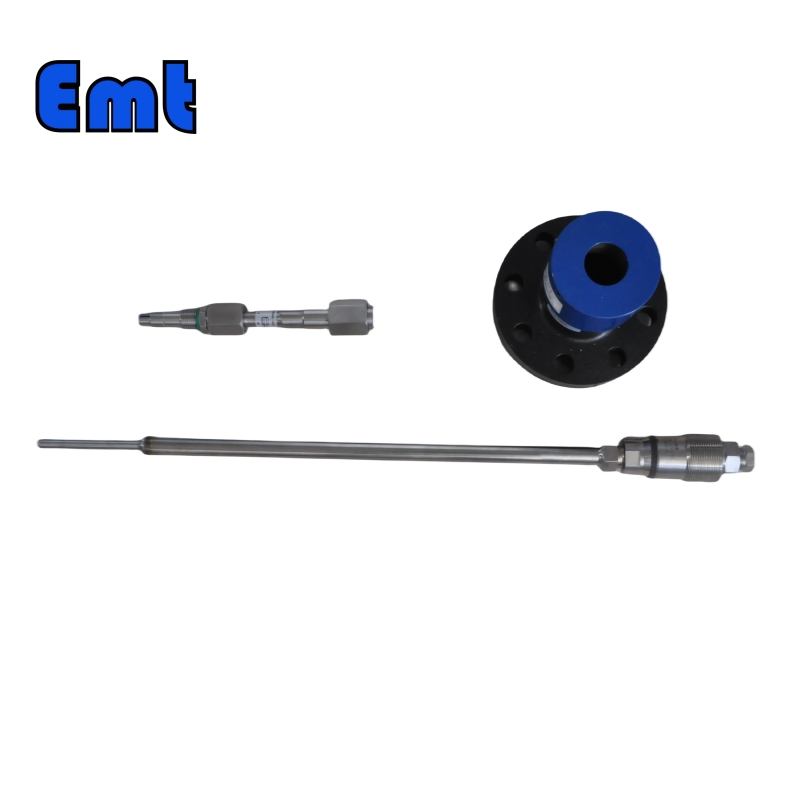
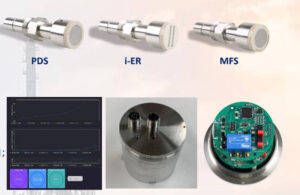
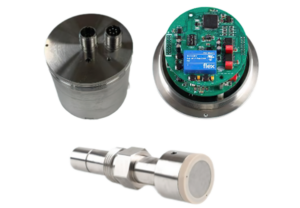
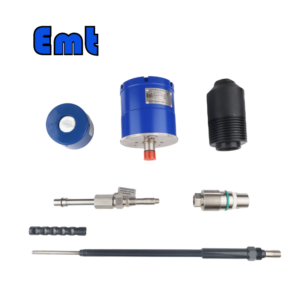
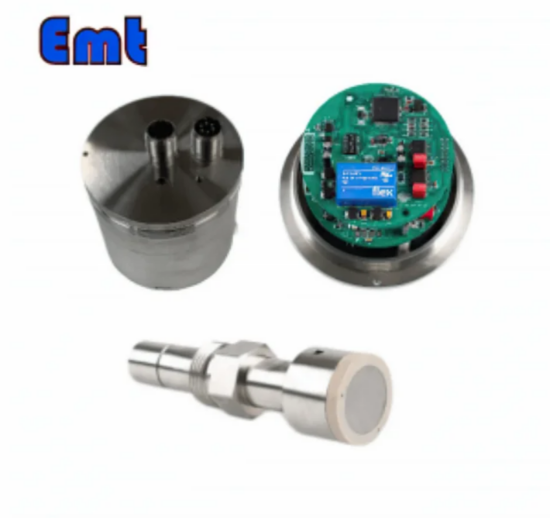
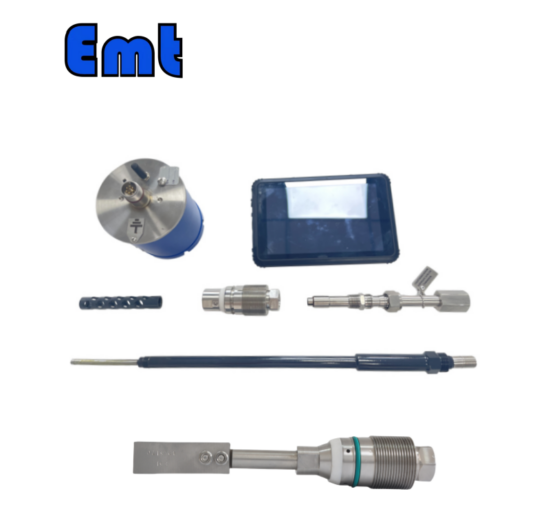
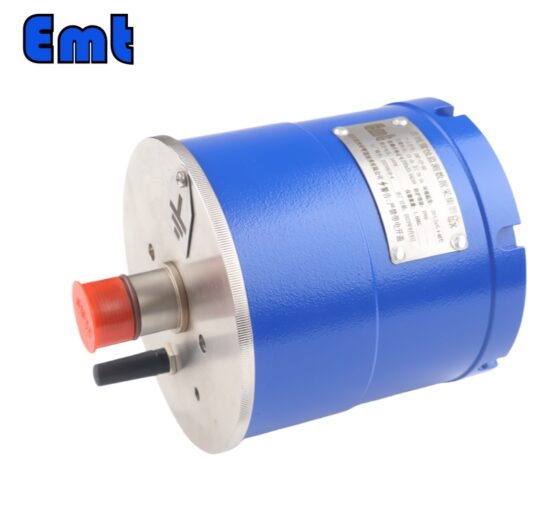
لا توجد مراجعات بعد.